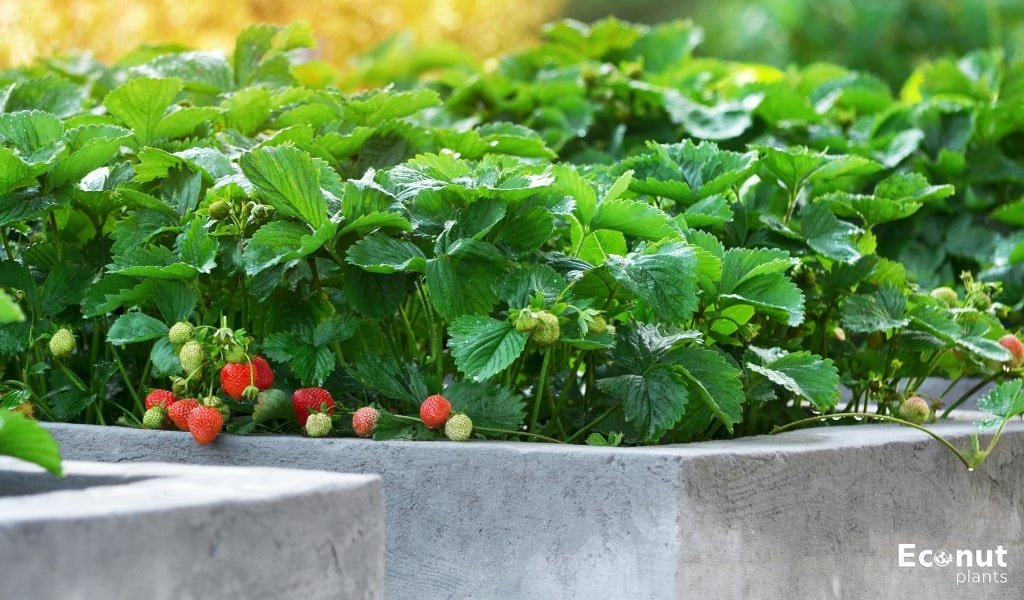Strawberries Raised Bed gardening is one of the easiest ways to enjoy this popular summer fruit, and this blog post shows you how to do it. Once you’ve tasted a strawberry picked fresh off the vine at the perfect ripeness and warmed by the sun to bring out its natural sweetness, there’s no going back.
If that’s not enough to convince you, cultivating strawberries is a straightforward fruit that will provide you with plants every year.
Why use raised beds for gardening?
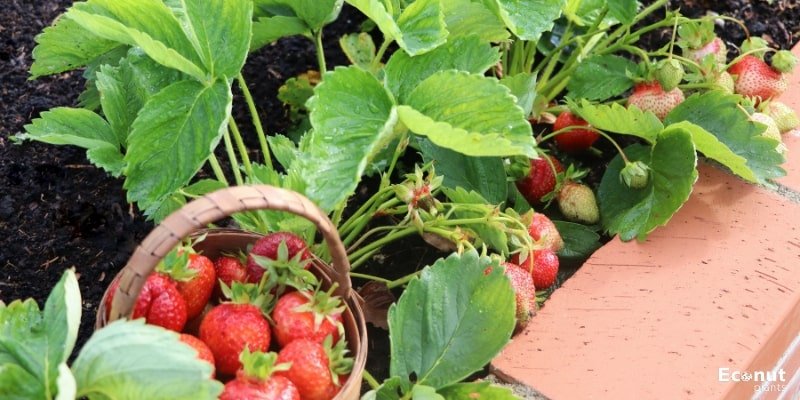
Strawberries and other small herbaceous perennials do well in loamy, well-drained soil. These members of the rosaceous family are native to North America. In the US, they can be cultivated in zones 4 through 12. Strawberries grow surprisingly easily, even for novice gardeners.
They can be grown in pots, hanging baskets, and other containers. They work well as an evergreen ground cover as well. The best strawberries, though, can come from raised garden beds.
Growing strawberries in garden boxes or raised beds offers several benefits:
- Enhanced drainage and infiltration of water.
- Filling beds with loamy dirt keeps the natural soil intact.
- Less competition between weeds.
- Faster to halt the quickly spreading plants.
- Rats and bugs are easy to control.
- Raised bed soil heats up faster in the spring.
- In the winter, it’s easier to cover and insulate.
- Wonderfully laid-out landscaping.
Raised beds can be planted practically anywhere in the yard with enough drainage and sunlight, but they often provide the healthiest plants that yield the highest-quality berries. Now let’s examine our top tips for growing strawberries in raised beds!
Tips for Growing in Raised Beds
After learning the advantages of cultivating strawberries on raised garden beds this year, let’s look at some of my best advice that will help make your harvest stand out from prior years!
Start with a Quality Raised Bed
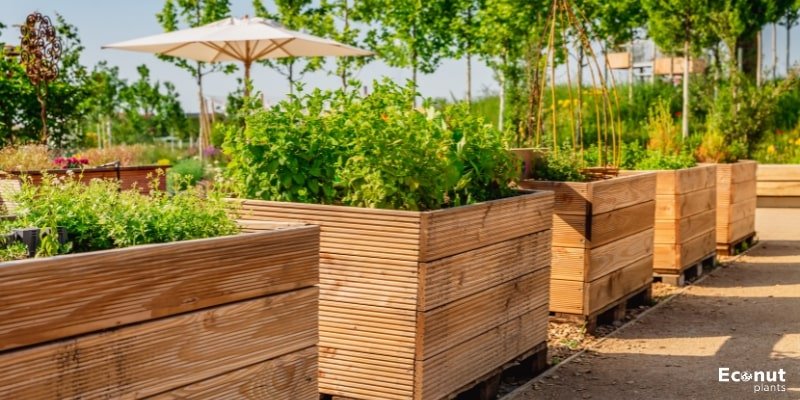
Raised beds are simply raised garden boxes filled with soil. There is an enormous variety of raised beds that can be built or bought, and almost all of them are suitable for strawberries.
While choosing your raised bed, bear in mind that most strawberries want a root zone that is at least 10 to 12 inches deep and needs around 1 square foot of room per plant. Additionally, you should confirm that the materials you choose for your landscaping will last a long time, be non-toxic, and look good.
Top choices include a few of these:
- Unfinished wood
- Deck with raised wooden planters
- Beds lined with bricks or stones
- Geotextile-covered soil mounds
- Beds of Hugelkultur
- Filling troughs with water
Other materials and designs are not the best for growing strawberries since they can leak toxins into the soil or don’t give the plants enough room to flourish.
- Steer clear of these raised garden bed types:
- Links to the railway
- Pressure-treated timber
- Coloured wood
- Blocks of concrete
- Outdated tyres
- Shallow mattresses
The size of each garden box should be your final consideration when designing your beds. A strawberry bed should not be broader than three to four feet, as this may make it challenging to reach the center for pruning, weeding, and harvesting. Maintaining standardized beds typically makes crop rotation, irrigation, and spacing easier.
Make Your Bed in the Direct Sunlight
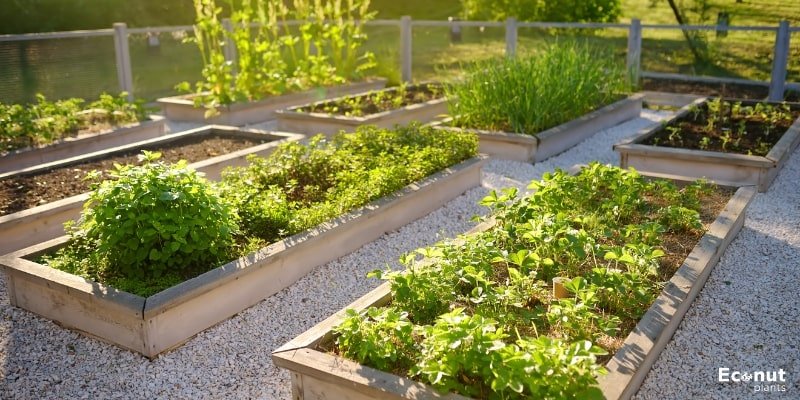
Strawberries need six to eight hours of direct sunlight per day. It’s important to build your beds in a part of the garden where they won’t be shaded by trees, buildings, or your house.
Remember that the strawberries are only there temporarily, even though the beds will be there for a very long time. Raised garden beds should be oriented from north to south to gain full sun exposure for a range of crops.
Never plant strawberries in the same bed as slower-growing vegetables like tomatoes, corn, or pole beans. These crops might shadow them out, which would lead to lower yields and less vitality.
Loamy, well-drained soil
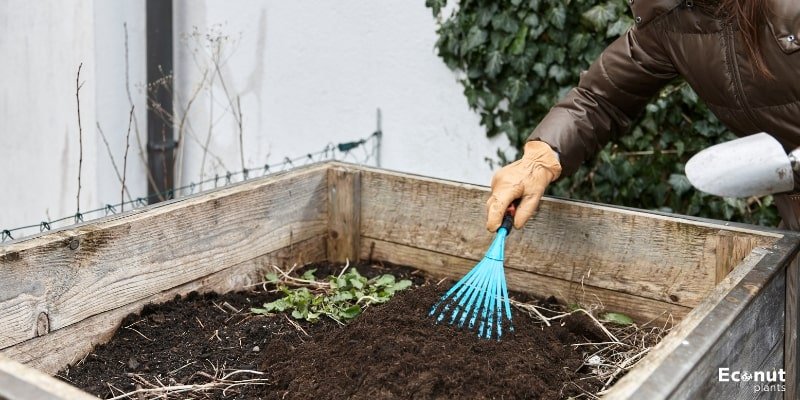
Raised garden beds offer you total control over the kind of soil that goes into them, which is one of their best features.
Raised garden beds provide the ideal growing medium for your plants without compromising the quality of the native soil, especially if you are starting with heavily clayed or compacted soil. Perhaps in due course, earthworms and bacteria will reach down and fix it for you!
Consider the characteristics of the soil that strawberries prefer while choosing the ideal soil for your beds:
- Excellent drainage
- Fluffy and luscious texture
- Elevated levels of organic matter
- Mild acidity
- Packed with minerals and microbes
Get potting mix or garden soil that contains two or more of the following primary elements to give your strawberries the best soil possible:
- Sandy loam potting mix
- Quality compost
- Peat moss
- Forest humus
- Chipped dry leaves
- Coco coir
- Chipped bark
- Perlite
- Bat guano
- Earthworm castings
- Decomposed manure
Strawberries require lots of organic matter and adequate drainage, so whether you decide to modify your current garden soil or purchase bags of organic potting soil, keep these things in mind.
Choose the Right Variety
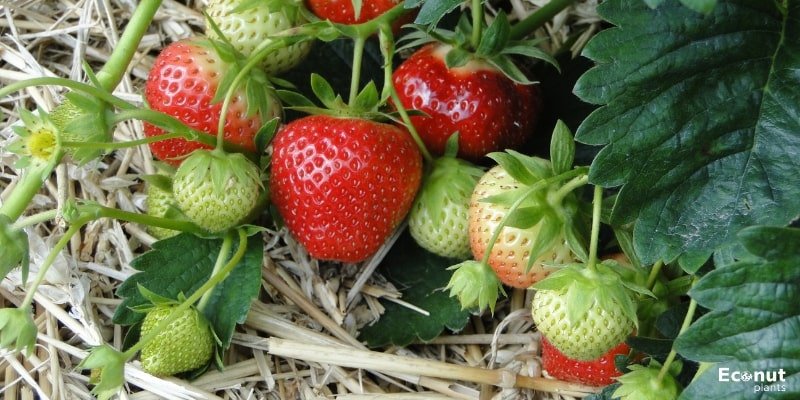
Beginner gardeners can occasionally make mistakes when choosing the proper kind for their garden beds.
Numerous cultivars and growth conditions have resulted in the emergence of numerous types of strawberries. June-bearing, ever-bearing, and day-neutral varieties are the three groups to which each variety belongs.
Day-Neutral
Day-Neutral: Day-neutral types are arguably ideal for raised beds since they yield an abundant supply of delicious berries for summertime munching. They yield the most in variety trials and fruit the year after they are planted. Even though their runners need to be regularly pruned, they can
Our top picks for day-neutral raised garden bed varieties are:
- Albion: The greatest of the best, these berries grow very quickly and flourish in most climates. They have the biggest yields, the tastiest sweet fruits, and the strongest resistance to disease.
- Portola: Fruit with a lighter colour, excellent flavour, early ripening, and remarkable performance in warmer climates
- Seascape: The most productive day-neutral cultivar, featuring medium-sized berries, a firm texture, a standard taste, and steady yields
Everbearing
Ever bearing: Ever-bearing types don’t produce as many runners in smaller, more space-constrained garden beds. They bear fruit the year after they are planted, and throughout the season, they generate two to four substantial flushes of berries.
Our favourite ever-bearing varieties for raised strawberry beds include:
- “Ozark Beauty”: is known for its large berries, strong yields in the autumn and early crops, and moderate flavour.
- “Fort Laramie”: exceptionally big, dark pink inside, skin fruits with a powerful honey aroma, amazing scent, and resistance to cold
- “Quinault”: this variety grows well in the Pacific Northwest, produces large, gorgeously soft fruits from late spring to October, and is great for storing or eating fresh.
June-Bearing
These are favoured by canners and preservers since they typically yield just one or two bumper crops of berries at a time. They are wonderful plants for growing in southern climates when planted in the autumn and harvested the following spring.
In the northern regions, however, they usually don’t produce in the first year. Additionally, they generate more runners. The June bearers aren’t exactly our thing.
Check out our most recent piece on unique and specialty-coloured strawberry types to add a little spice to your life.
Pinch the First Flowers in spring
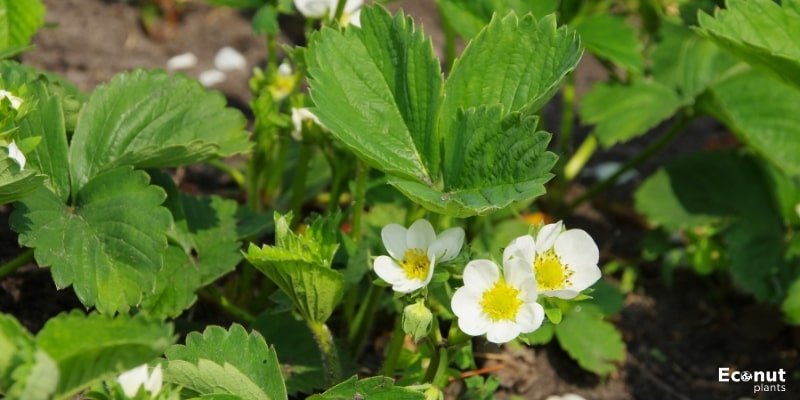
Sometimes, to reap greater rewards later on, you have to forgo immediate satisfaction. Strawberries are typically anxious to begin flowering nearly immediately after planting when grown on an elevated bed.
To help the plant focus its efforts on forming roots, it’s advisable to pinch off the early blossoms, even though you desire early fruit. Finally, after two to three weeks of intense plant development and flower pinching, it’s time to let those strawberries grow and start bearing fruit.
Prune off All Runners
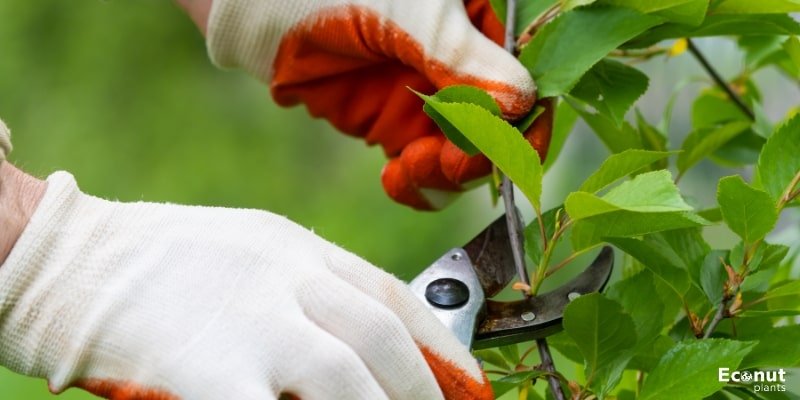
When left unattended, strawberries have a propensity to become matted and messy. This works well for ground cover, but it’s not the best way to get the most out of an elevated bed. You will be rewarded with more luscious berries if you take the extra time to trim strawberry runners.
Strawberries with proper pruning have several advantages:
- Increased yields of berries
- Fruit production is given more energy.
- Improved-looking mattresses
- More easily weed
- Reduced crowding
The lengthy stolons that strawberries send out in an attempt to produce new plants are known as runners, or “suckers.”
It won’t take long for you to observe these branches weaving through your beds after planting. Examine your raised bed every week or so for runners, and cut them off at the root of the plant with scissors or your finger.
Don’t Overcrowd Your Beds
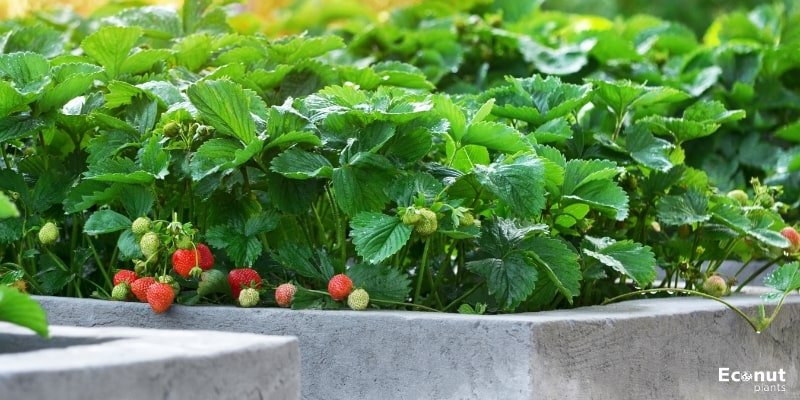
Most strawberry varieties need to be spaced 8 to 10″ apart from one another. As the plants develop into enormous, delicious bushes that can produce up to one pound of berries in the summer, this prevents the plants from becoming unduly competitive with one another.
If you happen to accidentally miss some runners in your strawberry bed and find they are rooted, be sure to go through and thin them out.
The strongest plants, with plenty of areas to grow, are usually the ones that bear the most fruit, despite the appearance that more little plants would provide more fruit.
Use Companion Plants

Companion planting is a well-liked organic gardening method that will boost the biodiversity in your raised beds. In a symbiotic relationship, strawberries and several other plants attract pollinators, encourage strawberry growth, and deter pests. Our favourite dishes to combine with strawberries are:
Borage
Plant this enormous but incredibly useful plant in the corners of your raised strawberry beds to attract beneficial insects, help your strawberries resist illness, and, if gardening lore is to be believed, even enhance their flavour.
Marigolds
Strawberries and marigolds not only create a stunning floral arrangement, but they also ward off nematodes known to cause knotting in roots.
Sweet alyssum
Stops pest outbreaks by drawing in beneficial pollinators and predatory insects.
Lettuce
If you give your strawberries 6 to 8 inches of space between each plant, lettuce is an ideal low-growing companion and won’t crowd them out or interfere with their growth. Additionally, the leafy plants can aid in keeping birds from snatching up the eye-catching red berries.
Creeping thyme
This aromatic, low-growing herb makes an excellent “pillow” for berries to settle on. With its potent scent, it also keeps worms away and draws in syrphid flies, which are beneficial insects that consume aphids and thrips. It can outcompete weeds by functioning as “living mulch.”
Generally speaking, it’s ideal to plant companion plants on the raised bed’s furthest corners.
Keep Garden Beds Weed-Free
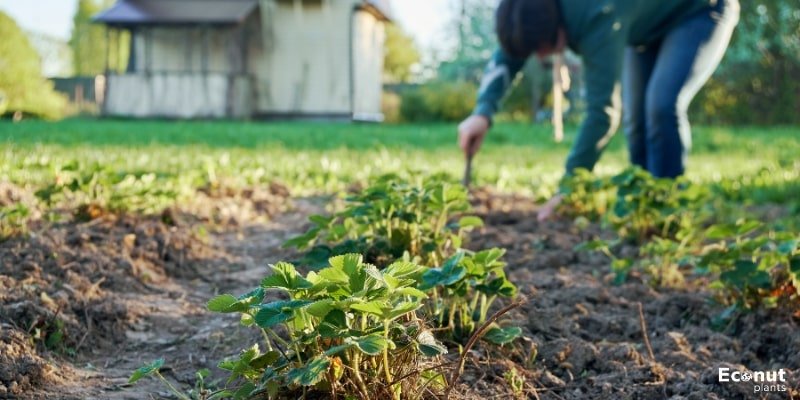
The inability of grass and other weeds to grow through an elevated bed is one of its main advantages. Nevertheless, this does not exclude weed seeds from rising above the ground and landing in your strawberry patch.
Maintaining a healthy level of weed growth is crucial to preventing excessive competition between strawberry plants, nutrients, and water. Weeds with slow growth rates could give slugs, worms, and voles more places to hide.
Because strawberries have shallow roots, you must be cautious not to damage them when you weed. When pulling weeds, I like to use a hori knife to cut them up at their root or a sharp scuffle hoe.
Keep Your Berries off the Soil
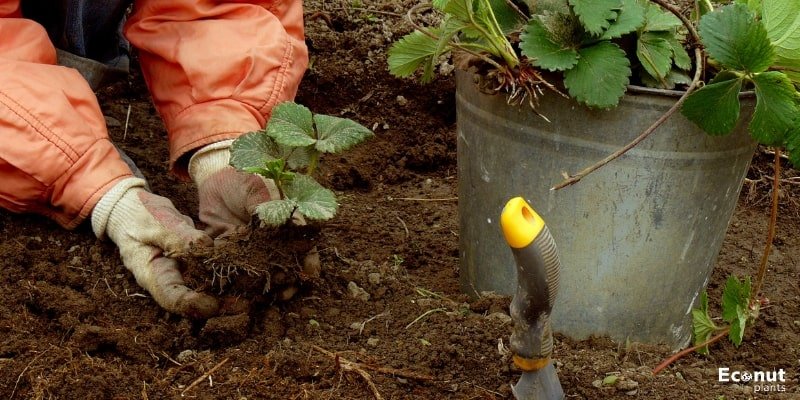
Perfectly speaking, strawberries ought to dangle like pretty flowers from the sides of our raised beds. Still, it is common to find berries sitting on the surface of the earth. Fruit that rots or is damaged by slugs and other pests might occasionally result from this.
To prevent these issues, mulch your strawberry plants with a mixture of dry, crushed straw. This has several wonderful benefits:
- Weed control
- Keeps the berries dirt-free and dry.
- Makes finding and harvesting berries easier.
- Keeps the soil’s upper layer moist.
- On warmer days, keep the strawberry root zones cool.
- Protects strawberries from the cold during chilly nights.
When planting in raised beds, mulching is a great way to make sure your plants grow rapidly and healthily.
Don’t Use Overhead Sprinklers
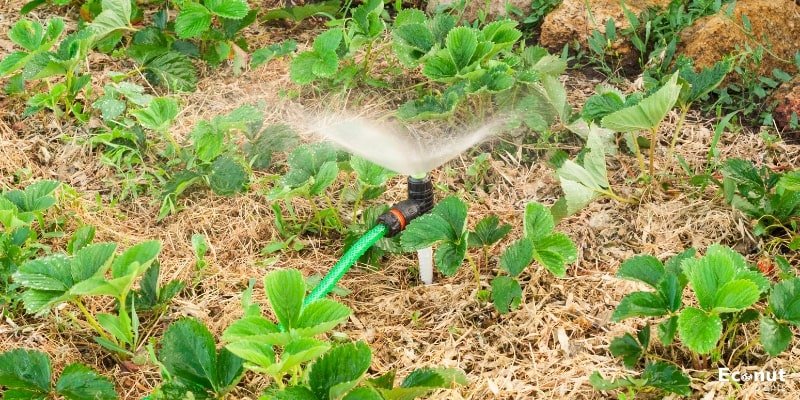
Finally, but just as importantly, this advice will spare you a tonne of hassle. When using raised beds, steer clear of overhanging sprinklers. There are four key reasons this is significant:
- Strawberry leaf surfaces that receive overhead irrigation can become contaminated with disease-causing organisms.
- Sprinklers promote the growth of weeds.
- Sprinklers can quickly cause the sides of your beds to deteriorate by soaking them.
- In addition to being a waste of water, overhead irrigation can hasten the drying of the soil.
Conclusion
In conclusion, growing strawberries in a plant-and-plot-raised garden bed is an excellent way to savour the health benefits of this superfood, save money, and enjoy fresh, delicious fruit.
You can have an abundant crop of tasty and nourishing strawberries throughout the growing season by taking the right care of them and planting them in the ideal location.

